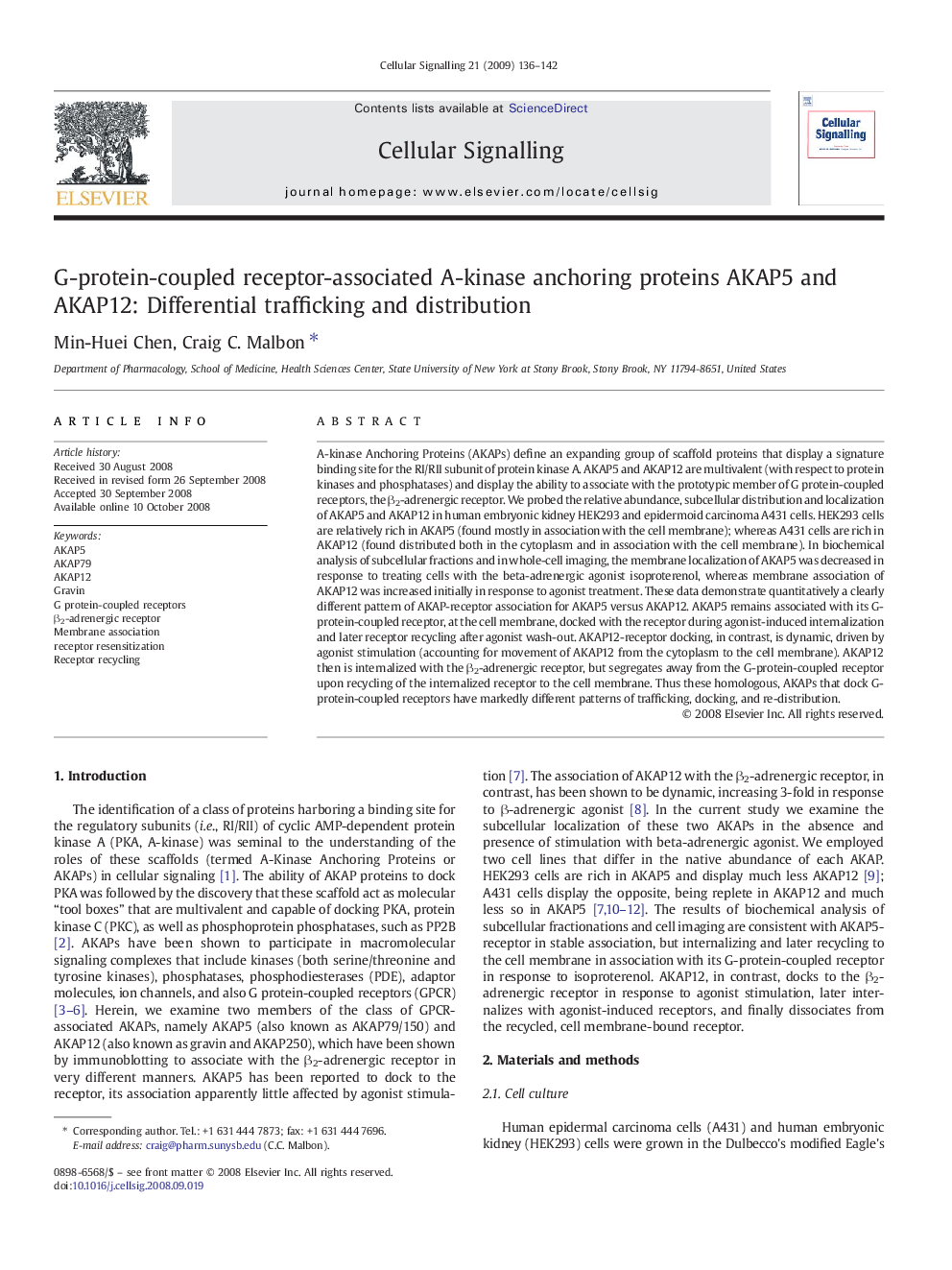| کد مقاله | کد نشریه | سال انتشار | مقاله انگلیسی | نسخه تمام متن |
|---|---|---|---|---|
| 1964859 | 1058618 | 2009 | 7 صفحه PDF | دانلود رایگان |

A-kinase Anchoring Proteins (AKAPs) define an expanding group of scaffold proteins that display a signature binding site for the RI/RII subunit of protein kinase A. AKAP5 and AKAP12 are multivalent (with respect to protein kinases and phosphatases) and display the ability to associate with the prototypic member of G protein-coupled receptors, the β2-adrenergic receptor. We probed the relative abundance, subcellular distribution and localization of AKAP5 and AKAP12 in human embryonic kidney HEK293 and epidermoid carcinoma A431 cells. HEK293 cells are relatively rich in AKAP5 (found mostly in association with the cell membrane); whereas A431 cells are rich in AKAP12 (found distributed both in the cytoplasm and in association with the cell membrane). In biochemical analysis of subcellular fractions and in whole-cell imaging, the membrane localization of AKAP5 was decreased in response to treating cells with the beta-adrenergic agonist isoproterenol, whereas membrane association of AKAP12 was increased initially in response to agonist treatment. These data demonstrate quantitatively a clearly different pattern of AKAP-receptor association for AKAP5 versus AKAP12. AKAP5 remains associated with its G-protein-coupled receptor, at the cell membrane, docked with the receptor during agonist-induced internalization and later receptor recycling after agonist wash-out. AKAP12-receptor docking, in contrast, is dynamic, driven by agonist stimulation (accounting for movement of AKAP12 from the cytoplasm to the cell membrane). AKAP12 then is internalized with the β2-adrenergic receptor, but segregates away from the G-protein-coupled receptor upon recycling of the internalized receptor to the cell membrane. Thus these homologous, AKAPs that dock G-protein-coupled receptors have markedly different patterns of trafficking, docking, and re-distribution.
Journal: Cellular Signalling - Volume 21, Issue 1, January 2009, Pages 136–142